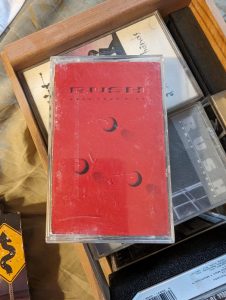After several disappointing books in a row, I decided late last year to read some old favorites this year. I read The Hobbit on the flights to and from Boston earlier this month and started on Lord Of The Rings.
Last night, we watched “The Hobbit: An Unexpected Journey”, the 2012 movie. I vaguely remember watching it when it came out, and finding it baffling. I don’t think we actually finished it, because it was so weird. But we watched the whole thing last night. All three hours of it. And, yeah, it was weird.
There were four kinds of content in the movie:
- Stuff that was actually in the book, or could be said to be implied or inspired by the book (like, filler conversations that aren’t actually in the book, but are reasonable to assume happened).
- Stuff that is not in the book, but is in the other books (Lord Of The Rings, Silmarillion, Unfinished Tales, etc, etc)
- Stuff that was just completely made up for no discernible reason
- Stuff that is in the book, but was skipped for no discernible reason
What was so jarring about the movie was that stuff in category 1 was just wonderful. It was beautiful, well acted, true to the book, and made me grin foolishly.
Stuff in category 2 was … ok, most of the time, but most of the time just seemed to distract from the simple storytelling that is The Hobbit.
And then there was category 3, which was … inexplicable, and stole all of the magic. What the heck was Radagast doing here? And what is up with his bunny sled? Why are the orcs showing up *before* the Misty Mountains? Just … why? It was all so unnecessary, and added *nothing* to the story.
Finally, the scenes that are left out, or changed in ways that made them so much worse.
Bilbo waking up in the morning, and rushing out without any encouragement from Gandalf was just not how it happened, and made that a lot less believable.
The way that Bilbo finds the ring stands out particularly, because it’s *such* an important scene, and was replaced with something that undoes a lot of the wonder of the book.
I’m trying very hard to view these movies as fan art, inspired by the book. I cannot figure out why they thought that this simple children’s story, which takes 2 or 3 hours to read, needed to become three extra-long movies. It feels like a disservice both to fans, and to people who had never read it, and now never will, because they made a simple story into an absurdly complicated epic. But we’re going to watch all three movies, and I’ll let you know how it goes.





